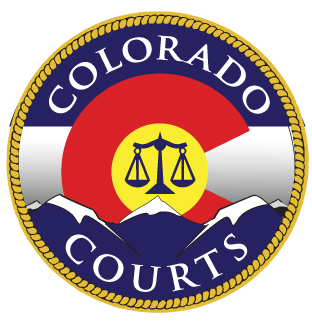Community and Educational Resources
Courts in the Community
Frequently Asked Questions
What happens during a court visit?
What happens during a court visit?
Oral arguments are generally held in the morning. The formal event begins with opening remarks welcoming the audience and explaining the format of the proceedings. The court hears two oral arguments during the visit. A question-and-answer session between the students and participating lawyers follows each argument. The judges or justices join the open dialogue with the students at the conclusion of the second session. The visit includes an opportunity to talk to justices and judges during the welcome reception, a lunch of classroom visits. The visit generally lasts four to five hours.
How is a Supreme Court visit different from a Court of Appeals visit?
How is a Supreme Court visit different from a Court of Appeals visit?
Visits from both courts begin with a coffee reception at the school. This gives the justices or judges an opportunity to meet community members, including teachers, school administrators, board members and district judges.
However, the length of the arguments and the number of judges involved differs. All seven Supreme Court Justices hear oral arguments. The arguments for each case last an hour (30 minutes per side). Court of Appeals judges sit in panels of three to hear cases. The Oral Arguments for each case last half an hour (15 minutes per side).
How can this program benefit your students?
How can this program benefit your students?
By bringing the judicial process to you, the Courts in the Community program provides a unique learning opportunity for all involved. This is a chance for teachers and students to witness actual court cases and view the appellate process in progress. It is also a chance for students to meet and interact with the judges and justices.
Prior to the visit, teachers are provided with lesson plans, background information and teaching materials. We also hold a teacher workshop where judges, staff attorneys and judicial staff help you understand the cases to be argued. Volunteer lawyers from your area may also schedule times to visit your classrooms and answer questions, facilitate discussions and lead activities with the students in order to help prepare them.
How do the Courts decide where and when they are going?
How do the Courts decide where and when they are going?
Both the Supreme Court and Court of Appeals try to visit one urban and one rural school each year. Our visits are usually in the fall and the spring. Arguments can be held on the school campus or, depending upon space, in a nearby college facility or convention center. We look for locations where there is strong interest from teachers, students and administrators. If there is room, the host schools are encouraged to invite other nearby schools to participate in the event. Our goal is to expose as many students and communities to our program as possible. While priority is given to schools we haven't visited, we do return to schools if significant time has passed.
How do schools get involved?
How do schools get involved?
If you are interested in having the Colorado Supreme Court or Court of Appeals visit your school, first check with your principal and teachers (especially government, history, social studies and law) to ensure there is interest. Then contact Susan Postema Scheeres, who oversees the program, for more information.
What is required of schools?
What is required of schools?
You have five main responsibilities when hosting the Supreme Court or Court of Appeals:
- Select a school representative to serve as liaison and attend meetings to plan project components. We provide a planning guide and work closely with you and your school to ensure that everything is ready for the Court's visit.
- Determine teachers to participate in the program. Teachers will attend a virtual workshop that provides important information from judges, lawyers and judicial staff about the cases and the visit.
- Prepare students for Oral Arguments using lesson plans provided.
- Provide the Judicial Branch with a list of local officials to invite to the event.
- Provide venue and help set up for event.
What will your students learn from this experience?
What will your students learn from this experience?
Our goal is for your students to learn as much as possible about the Colorado judicial system and how disputes are resolved. The more students learn about the cases and the judicial system before the visit, the more they will glean from the experience.
In addition to your own curriculum, consider supplementing with our lesson plans that cover the following topics:
- The importance of the rule of law
- U.S. and Colorado constitutions
- History of the Colorado Courts
- Impact of Judicial Review
- Becoming a Colorado State Judge
- How the Colorado Courts Work
- How the Appellate Process Works
- What to Expect at Oral Arguments (including Courtroom Etiquette)
- Analyzing Court Cases
 Colorado Judicial Branch
Colorado Judicial Branch